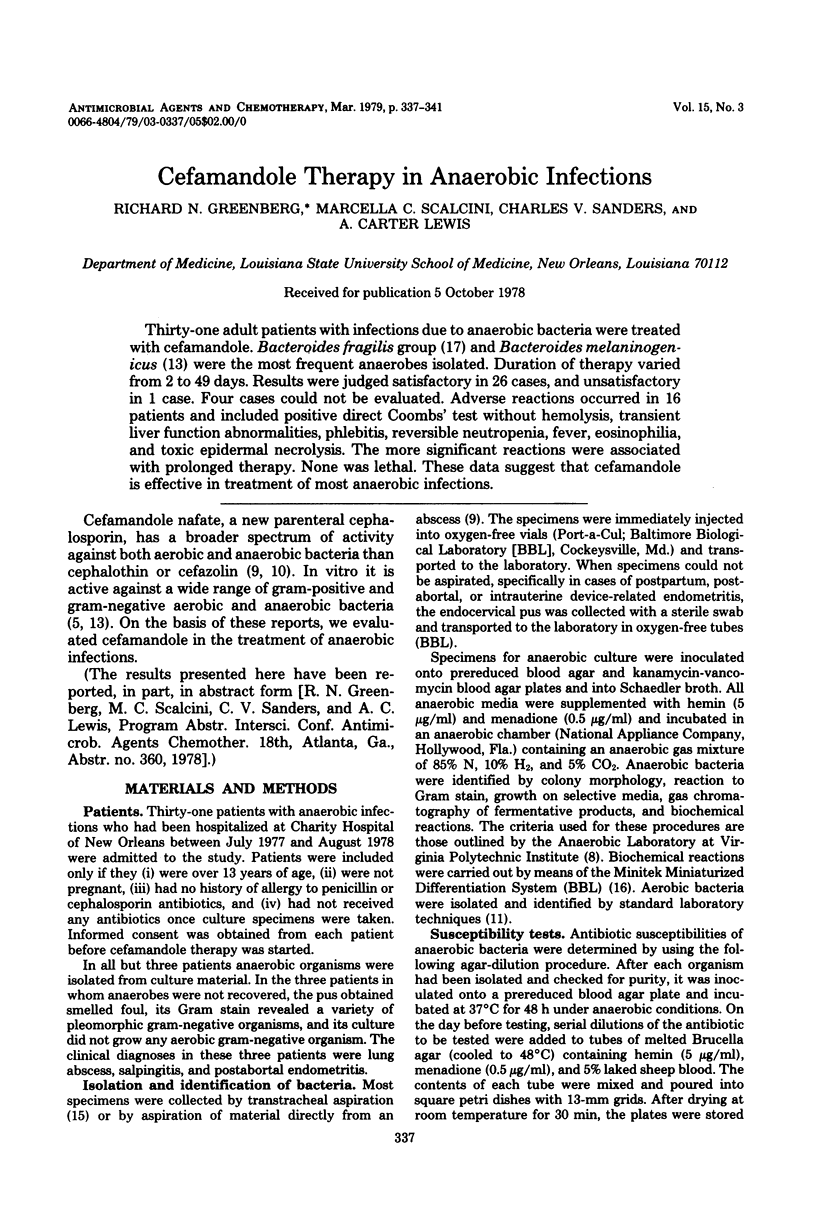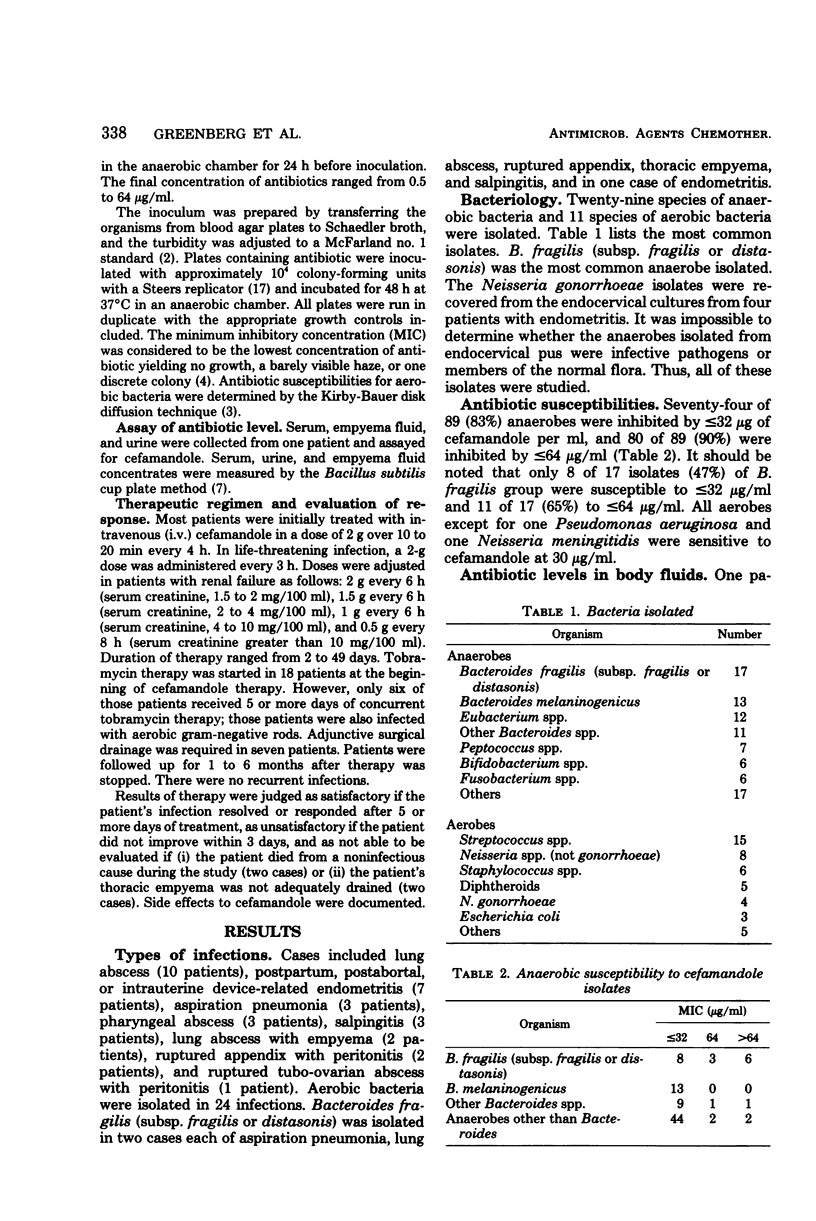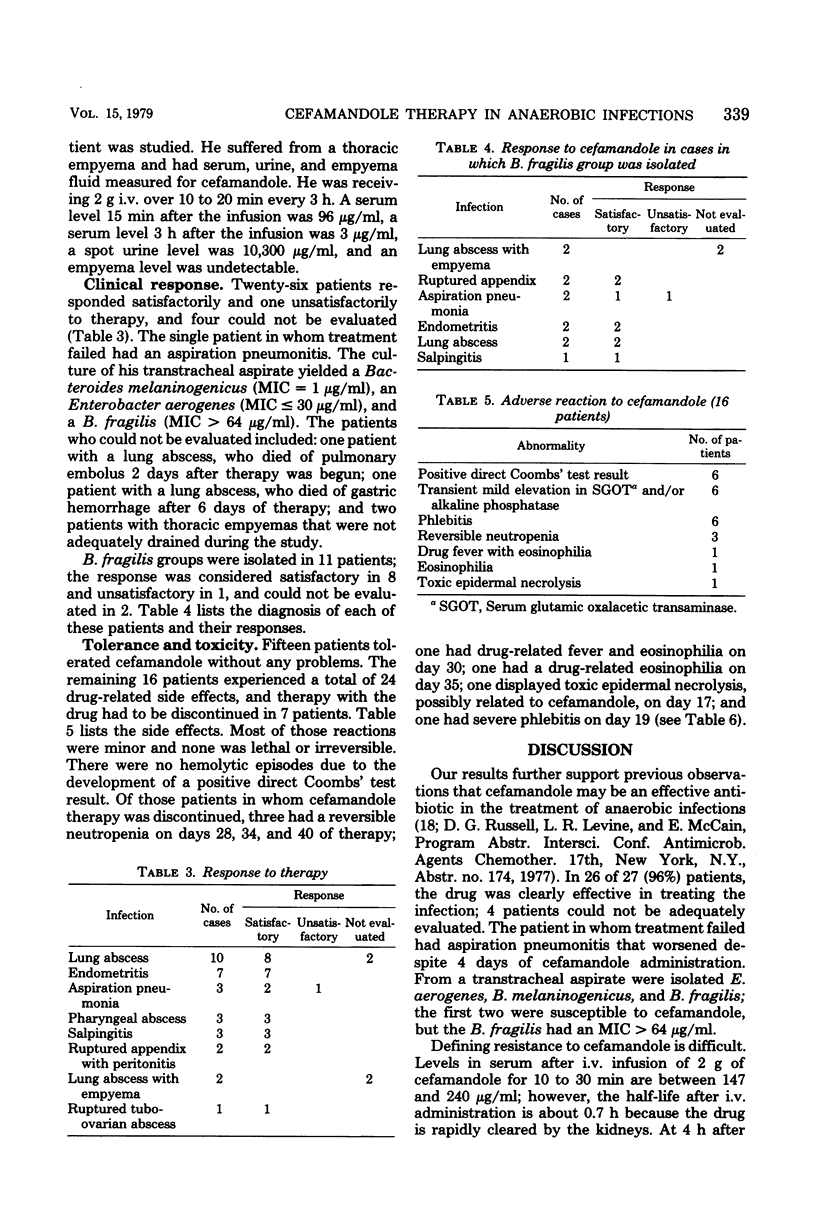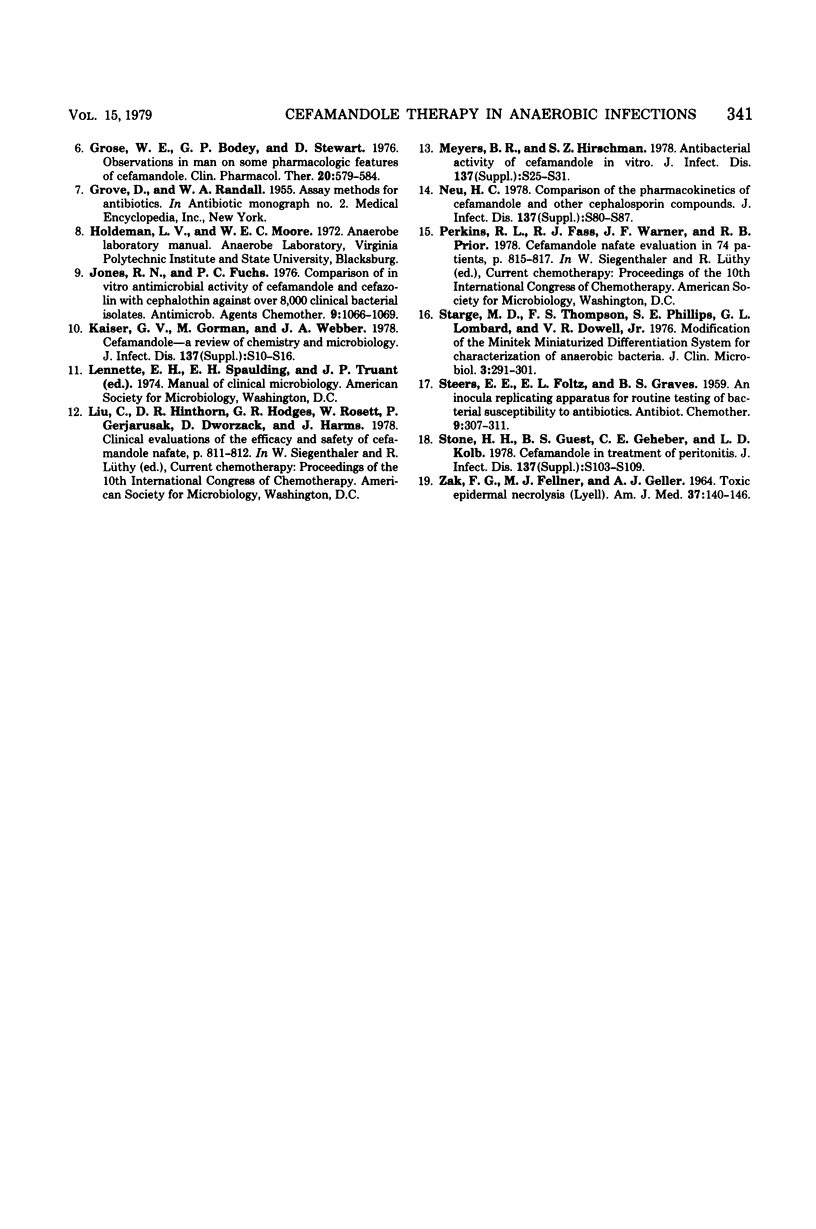Abstract
Thirty-one adult patients with infections due to anaerobic bacteria were treated with cefamandole. Bacteroides fragilis group (17) and Bacteroides melaninogenicus (13) were the most frequent anaerobes isolated. Duration of therapy varied from 2 to 49 days. Results were judged satisfactory in 26 cases, and unsatisfactory in 1 case. Four cases could not be evaluated. Adverse reactions occurred in 16 patients and included positive direct Coombs' test without hemolysis, transient liver function abnormalities, phlebitis, reversible neutropenia, fever, eosinophilia, and toxic epidermal necrolysis. The more significant reactions were associated with prolonged therapy. None was lethal. These data suggest that cefamandole is effective in treatment of most anaerobic infections.
Full text
PDF




Selected References
These references are in PubMed. This may not be the complete list of references from this article.
- Bauer A. W., Kirby W. M., Sherris J. C., Turck M. Antibiotic susceptibility testing by a standardized single disk method. Am J Clin Pathol. 1966 Apr;45(4):493–496. [PubMed] [Google Scholar]
- DIVINCENTI F. C., COHN I., Jr THE ROLE OF SUTURE MATERIAL ON TUMOR IMPLANTATION. JAMA. 1965 Jan 11;191:107–109. doi: 10.1001/jama.1965.03080020035010. [DOI] [PubMed] [Google Scholar]
- Ernst E. C., Berger S., Barza M., Jacobus N. V., Tally F. P. Activity of cefamandole and other cephalosporins against aerobic and anaerobic bacteria. Antimicrob Agents Chemother. 1976 May;9(5):852–855. doi: 10.1128/aac.9.5.852. [DOI] [PMC free article] [PubMed] [Google Scholar]
- Grose W. E., Bodey G. P., Stewart D. Observations in man on some pharmacologic features of cefamandole. Clin Pharmacol Ther. 1976 Nov;20(5):579–584. doi: 10.1002/cpt1976205579. [DOI] [PubMed] [Google Scholar]
- Jones R. N., Fuchs P. C. Comparison of in vitro antimicrobial activity of cefamandole and cefazolin with cephalothin against over 8,000 clinical bacterial isolates. Antimicrob Agents Chemother. 1976 Jun;9(6):1066–1069. doi: 10.1128/aac.9.6.1066. [DOI] [PMC free article] [PubMed] [Google Scholar]
- Kaiser G. V., Gorman M., Webber J. A. Cefamandole---a review of chemistry and microbiology. J Infect Dis. 1978 May;137 (Suppl):S10–S16. doi: 10.1093/infdis/137.supplement.s10. [DOI] [PubMed] [Google Scholar]
- Meyers B. R., Hirschman S. Z. Antibacterial activity of cefamandole in vitro. J Infect Dis. 1978 May;137 (Suppl):S25–S31. doi: 10.1093/infdis/137.supplement.s25. [DOI] [PubMed] [Google Scholar]
- Neu H. C. Comparison of the pharmacokinetics of cefamandole and other cephalosporin compounds. J Infect Dis. 1978 May;137 (Suppl):S80–S87. doi: 10.1093/infdis/137.supplement.s80. [DOI] [PubMed] [Google Scholar]
- Stargel D., Thompson F. S., Phillips S. E., Lombard G. L., Dowell V. R., Jr Modification of the Minitek Miniaturized Differentiation System for characterization of anaerobic bacteria. J Clin Microbiol. 1976 Mar;3(3):291–301. doi: 10.1128/jcm.3.3.291-301.1976. [DOI] [PMC free article] [PubMed] [Google Scholar]
- Stone H. H., Guest B. S., Geheber C. E., Kolb L. D. Cefamandole in treatment of peritonitis. J Infect Dis. 1978 May;137 (Suppl):S103–S109. doi: 10.1093/infdis/137.supplement.s103. [DOI] [PubMed] [Google Scholar]
- ZAK F. G., FELLNER M. J., GELLER A. J. TOXIC EPIDERMAL NECROLYSIS (LYELL). THE SCALDED SKIN SYNDROME. Am J Med. 1964 Jul;37:140–146. doi: 10.1016/0002-9343(64)90218-9. [DOI] [PubMed] [Google Scholar]


